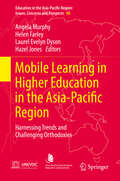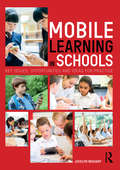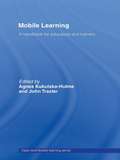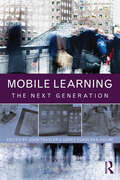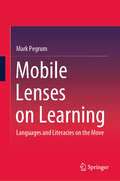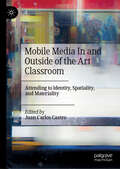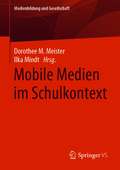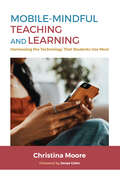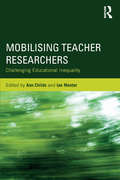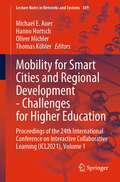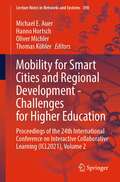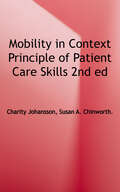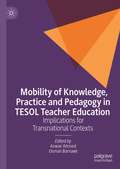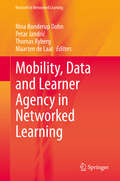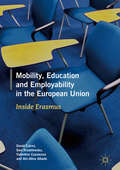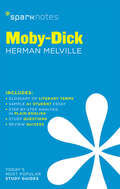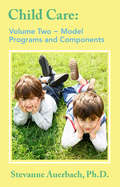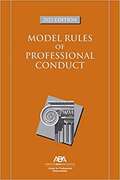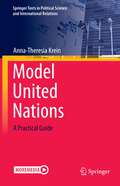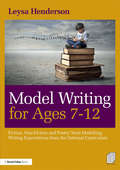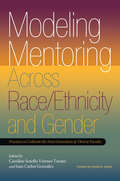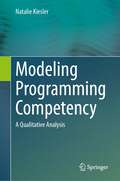- Table View
- List View
Mobile Learning in Higher Education in the Asia-Pacific Region
by Hazel Jones Angela Murphy Helen Farley Laurel Evelyn DysonIf mobile technologies are to be effectively used in education, how do we best implement sustainable mobile solutions for teaching and learning? The aim of this handbook is to support educators and policy makers who are investing in innovations in digital education to develop effective and sustainable mobile learning solutions for higher education environments. Authors from sixteen countries across the Asia-Pacific region have collaborated to share their experiences with developing and implementing mobile learning initiatives. These projects focus on a variety of aspects of mobile learning innovation, from the trial adoption of existing social media platforms on mobile devices and the development of specialised applications or mobile learning systems, to the large-scale, interuniversity implementation of technologies and pedagogies to support mobile learning. Each chapter addresses challenges and solutions at one or more levels of mobile learning innovation within the education system, encompassing the student perspective, the educator perspective, technical processes, policies and organisational strategy, and leadership. The book also offers a unique perspective on the integration of mobile learning innovations within the educational, political and cultural environments of Asia-Pacific countries.
Mobile Learning in Schools: Key Issues, Opportunities and Ideas for Practice
by Jocelyn WishartMobile Learning in Schools explores the potential for using mobile devices in diverse school and college settings around the globe. It evaluates the exciting opportunities mobile initiatives bring and shares experience of where things can go wrong, in order to ensure that those embarking on new projects are fully informed. Drawing on a wide range of international perspectives, it unpicks knotty sociocultural issues, including lack of sustainability, behavioural and ethical concerns, and explores successful student learning. Key issues considered include: mobile learning in primary schools teaching and learning with mobile devices in secondary schools opportunities inside and outside school pedagogical principles and sustainability mobile learning for initial teacher training and CPD ethical considerations behaviour matters – disruption, plagiarism, cheating, cyberbullying assessing mobile learning. With annotated further reading and questions to trigger reflection and further discussion amongst readers, this thought-provoking text provides a detailed survey of this often controversial topic. It is essential reading for all those engaged in understanding the potential for using mobile devices to support students’ learning.
Mobile Learning: A Handbook for Educators and Trainers (Open And Flexible Learning Ser.)
by Agnes Kukulska-Hulme John TraxlerEmphasising the issues of usability, accessibility, evaluation and effectiveness and illustrated by case studies drawn from contemporary projects from around the world, this book considers: the fundamentals of mobile technologies and devices the educational foundations of modern networked learning the issues that underpin mobile learning and make it accessible for all users the challenges of making mobile learning a substantial and sustainable component in colleges, universities and corporations implications and issues for the future. Mobile Learning provides useful, authoritative and comprehensive guidance for professionals in higher and further education and trainers in the business sector who want to find out about the opportunities offered by new technologies to deliver, support and enhance teaching, learning and training.
Mobile Learning: A Qualitative and Quantitative Analysis for Implementation
by Birendra BistaA dissertation by Birendra Bista on mobile learning, a new paradigm in e-learning.
Mobile Learning: The Next Generation (Open And Flexible Learning Ser.)
by Agnes Kukulska-Hulme John TraxlerMobile Learning: The Next Generation documents the most innovative projects in context-aware mobile learning in order to develop a richer theoretical understanding of learning in modern mobile-connected societies. Context-aware mobile learning takes advantage of cell phone, mobile, and pervasive personal technologies to design learning experiences that exploit the richness of both indoor and outdoor environments. These technologies detect a learner’s presence in a particular place, the learner’s history in that place or in relation to other people and objects nearby, and adapt learning experiences accordingly, enabling and encouraging learners to use personal and social technologies to capture aspects of the environment as learning resources, and to share their reactions to them.
Mobile Lenses on Learning: Languages and Literacies on the Move
by Mark PegrumThis book explores mobile learning as a form of learning particularly suited to our ever more mobile world, presenting a new conceptualisation of the value of mobile devices in education through the metaphor of lenses on learning. With a principal focus on mobile-assisted language learning (MALL), it draws on insights derived from MALL language, literacy and cultural projects to illustrate the possibilities inherent in all mobile learning.In its broad sweep the book takes in new and emerging technologies and tools from robots to holograms, virtual reality to augmented reality, and smart glasses to embeddable chips, considering their potential impact on education and, indeed, on human society and the planet as a whole. While not shying away from discussing the risks, it demonstrates that, handled appropriately, mobile, context-aware technologies allow educators to build on the personalised and collaborative learning facilitated by web 2.0 and social media, but simultaneously to go much further in promoting authentic learning experiences grounded in real-world encounters. In this way, teachers can better prepare students to face a global, mobile future, with all of its evolving possibilities and challenges.
Mobile Media In and Outside of the Art Classroom: Attending to Identity, Spatiality, and Materiality
by Juan Carlos CastroThis edited volume explores a range of educational effects on student learning that resulted from a long-term study using a creative visual arts curriculum designed for mobile media (smartphones and tablets) and used in art classrooms. The curriculum, entitled MonCoin, a French phrase meaning My Corner, was initially designed and piloted in a Montreal area school for at-risk youth in 2012. Since then, it has been refined, deployed, and researched across secondary schools from a range of socio-cultural educational contexts. This book is comprised of contributions from researchers and practitioners associated with the MonCoin project who address critical insights gleaned from our study, such as the social context of teen mobile media use; curriculum theory and design; influences of identity on creative practice; and specific strategies for creative applications of mobile media in schools. The purpose of this edited book is to offer art education researchers and teachers innovative curriculum for mobile media and the networked conditions that influence identity, space, and practice with and through this ubiquitous technology.
Mobile Medien im Schulkontext (Medienbildung und Gesellschaft #41)
by Dorothee M. Meister Ilka MindtDer Band beleuchtet sowohl aus medienpädagogischer als auch aus fachwissenschaftlicher und fachdidaktischer Sicht den Stand und die Perspektiven des mobilen Medieneinsatzes an Schulen. Der schulische Kontext ist gefordert, Digitalisierungstrends aufzugreifen, und zwar durch ein Lernen mit, über und durch Medien. Da inzwischen mobile Geräte immer mehr zum Schulalltag dazugehören, ist zu klären, welche Konzepte den Einsatz begründen und wie konkret mobile Geräte sinnvoll in den Unterricht integriert werden können.
Mobile-Mindful Teaching and Learning: Harnessing the Technology That Students Use Most
by Christina MooreThis book provides faculty and instructors with an introductory guide to integrating mobile learning in their courses. Recognizing that a smartphone is the first and main piece of technology anyone owns, with ownership exceeding 95% for those aged 18-29, with a sizable minority of these being smartphone-dependent; and that instructors are relying on technology for teaching and learning more than ever; this book addresses the imperative that course materials and interactions be increasingly available through the technology that students use most often. Dispelling the notion that mobile learning is for the tech-savvy and adventurous, mobile-mindful teaching offers teachers a way to take a few steps at a time, share options with students, and progressively develop ideas and practices. The book invites you to explore your own way into mobile learning.Christina Moore stresses two principles as you engage with mobile learning--intention and fluidity. This begins with mindfully implementing mobile learning opportunities so that students see the usefulness of learning via phone; and recognizing the fluid learning environments in which students learn so you can offer online modalities and functions appropriate to purpose and situations.The book opens with a “start with self” section on How to Be a Mobile Mindful Learner, offering ideas on exploring the almost infinite available online resources in your discipline to curate a rich and ever-expanding compilation of ideas for use in your scholarly work and teaching; and identifying different types of learning (digital reading, audio and visual learning, and social learning) across multiple devices and contexts to consider as you develop your course.The section “Toward Mobile-Mindful Teaching” explores ways to add mobile options to existing learning materials and how they and the LMS functions you use are rendered on a phone by taking a mobile test drive through your course.Christina Moore shows how, by building up your mobile learning skills to be a more productive scholar and developing habits that feed your curiosity and creativity, you can start planning how you can create fluid learning opportunities for your students they can access across devices, time, and space, and take advantage of found moments of time and informal spaces.
Mobilising Teacher Researchers: Challenging Educational Inequality
by Ann Childs and Ian Menter'[A] really important book […] the growth of interest in teachers in England taking part in educational research is significant.' – John Furlong, Emeritus Professor of Education, Oxford University, UK. Mobilising Teacher Researchers brings together the results of a research project carried out over a two-year period, commissioned by the National College for Teaching and Leadership and involving over 650 schools in England. An internationally renowned group of contributors present crucial and intriguing lessons learnt from the 'Closing the Gap: Test and Learn' project, aimed at identifying ways in which to close the attainment gap, raise the achievement of disadvantaged children in England, and introduce new research methods into schools. From the project’s policy origins to its implementation, the book captures the diverse range of outcomes from the project, both intended and unexpected. It reveals the ways and extent to which teachers were mobilised as researchers, and how analysis will impact on the future of research-informed practice in schools. This resulting collection of evolutionary debates focuses on topics such as new forms of governance, teacher engagement and the effectiveness of Randomised Controlled Trials. It foregrounds new approaches to school-based educational research, and is crucial reading for anyone concerned with educational research, and seeking to understand education for social mobility.
Mobility for Smart Cities and Regional Development - Challenges for Higher Education: Proceedings of the 24th International Conference on Interactive Collaborative Learning (ICL2021), Volume 1 (Lecture Notes in Networks and Systems #389)
by Michael E. Auer Thomas Köhler Hanno Hortsch Oliver MichlerThis book presents recent research on interactive collaborative learning. We are currently witnessing a significant transformation in the development of education and especially post-secondary education. To face these challenges, higher education has to find innovative ways to quickly respond to these new needs. On the one hand, there is a pressure by the new situation in regard to the COVID pandemic. On the other hand, the methods and organizational forms of teaching and learning at higher educational institutions have changed rapidly in recent months. Scientifically based statements as well as excellent experiences (best practice) are absolutely necessary.These were the aims connected with the 24th International Conference on Interactive Collaborative Learning (ICL2021), which was held online by Technische Universität Dresden, Germany, on 22–24 September 2021.Since its beginning in 1998, this conference is devoted to new approaches in learning with a focus on collaborative learning in Higher Education. Nowadays, the ICL conferences are a forum of the exchange of relevant trends and research results as well as the presentation of practical experiences in Learning and Engineering Pedagogy. In this way, we try to bridge the gap between ‘pure’ scientific research and the everyday work of educators.This book contains papers in the fields of Teaching Best Practices Research in Engineering Pedagogy Engineering Pedagogy Education Entrepreneurship in Engineering Education Project-Based Learning Virtual and Augmented Learning Immersive Learning in Healthcare and Medical Education. Interested readership includes policymakers, academics, educators, researchers in pedagogy and learning theory, schoolteachers, learning industry, further and continuing education lecturers, etc
Mobility for Smart Cities and Regional Development - Challenges for Higher Education: Proceedings of the 24th International Conference on Interactive Collaborative Learning (ICL2021), Volume 2 (Lecture Notes in Networks and Systems #390)
by Michael E. Auer Thomas Köhler Hanno Hortsch Oliver MichlerThis book presents recent research on interactive collaborative learning. We are currently witnessing a significant transformation in the development of education and especially post-secondary education. To face these challenges, higher education has to find innovative ways to quickly respond to these new needs. On the one hand, there is a pressure by the new situation in regard to the COVID pandemic. On the other hand, the methods and organizational forms of teaching and learning at higher educational institutions have changed rapidly in recent months. Scientifically based statements as well as excellent experiences (best practice) are absolutely necessary.These were the aims connected with the 24th International Conference on Interactive Collaborative Learning (ICL2021), which was held online by Technische Universität Dresden, Germany, on 22–24 September 2021.Since its beginning in 1998, this conference is devoted to new approaches in learning with a focus on collaborative learning in Higher Education. Nowadays, the ICL conferences are a forum of the exchange of relevant trends and research results as well as the presentation of practical experiences in Learning and Engineering Pedagogy. In this way, we try to bridge the gap between ‘pure’ scientific research and the everyday work of educators.This book contains papers in the fields ofTeaching Best PracticesResearch in Engineering PedagogyEngineering Pedagogy EducationEntrepreneurship in Engineering EducationProject-Based LearningVirtual and Augmented LearningImmersive Learning in Healthcare and Medical Education.Interested readership includes policymakers, academics, educators, researchers in pedagogy and learning theory, schoolteachers, learning industry, further and continuing education lecturers, etc
Mobility in Context: Principles of Patient Care Skills
by Charity Johansson Susan A. ChinworthMaximize patient care skills Rely on this state-of-the-art, multimedia resource to help you navigate confidently in both common and complex clinical situations. Mastering patient care skills will ground you in fundamental rehabilitation principles; help you establish a culture of patient-centered care; and teach you to foster habits of clinical problem solving and critical thinking. You'll also learn how to help your patients progress toward greater mobility and independence. Over 750 full-color photographs and illustrations make every concept crystal clear. See the techniques in action Fifty-five full-color narrated video clips online at DavisPlus show you clinicians and patients performing key techniques described in the text.
Mobility of Knowledge, Practice and Pedagogy in TESOL Teacher Education: Implications for Transnational Contexts
by Anwar Ahmed Osman BarnawiThis edited book brings together chapters from diverse geographical and educational contexts to examine the question of transnationalism in English Language teacher education. While the activities that connect people, institutions and cultural practices across the borders of nation-states have gained interest in fields such as applied linguistics, TESOL and migration studies in recent years, there has been little research so far into how transnationalism intersects with language teacher education, and how existing practices can be better integrated into teacher education programmes. The authors fill this gap by introducing and examining existing transnational practices - including cross-cultural settings, study abroad programmes and online teacher education - then offering multiple dialogues on mobility of knowledge, practice and pedagogy in teacher education. This book will be of interest to language teachers, teacher educators, and students and scholars of applied linguistics, cross-cultural studies, and migration studies.
Mobility, Data and Learner Agency in Networked Learning (Research in Networked Learning)
by Thomas Ryberg Maarten De Laat Petar Jandrić Nina Bonderup DohnThe chapters in this book are based on selected peer reviewed research papers presented at the 11th biennial Networked Learning Conference (NLC) 2018 held in Zagreb and were chosen as exemplars of cutting edge research on networked learning. The chapters are organized into three main sections: 1) Aspects of mobility for Networked Learning in a global world, 2) Use and misuse of algorithms and learning analytics, 3) Understanding and empowering learners. The three main sections are flanked by chapters which introduce and reflect on Networked Learning as epistemic practice. The concluding chapter draws out perspectives from the chapters and discusses emerging issues. The book focuses on the nature of learning and interactions as an important characteristic sought out by researchers and practitioners in this field.
Mobility, Education and Employability in the European Union: Inside Erasmus
by David Cairns Valentina Cuzzocrea Ewa Krzaklewska Airi-Alina AllasteThis book takes an in-depth look at the European Commission’s Erasmus programme. In its current Erasmus+ format, the programme supports international exchange visits among students, trainees, volunteers and academic members of staff with a view to enhancing employability and encouraging intercultural understanding. Against the backdrop of the 30th anniversary of Erasmus, the authors explore the successes of the programme, most prominently the undergraduate exchange programme, as well as areas of on-going development, including the incorporation of short duration mobility projects focused on specific social issues into the initiative.Through integrating perspectives from authors in a number of European countries, all of whom have knowledge regarding various aspects of Erasmus, the book provides insight into the challenges facing the programme as it moves into its fourth decade. Mobility, Education and Employability in the European Union: Inside Erasmus will be of interest to students and scholars from a range of disciplines, including geography, sociology and European politics.
Moby-Dick SparkNotes Literature Guide (SparkNotes Literature Guide Series #45)
by SparkNotesMoby-Dick SparkNotes Literature Guide by Herman Melville Making the reading experience fun! When a paper is due, and dreaded exams loom, here's the lit-crit help students need to succeed! SparkNotes Literature Guides make studying smarter, better, and faster. They provide chapter-by-chapter analysis; explanations of key themes, motifs, and symbols; a review quiz; and essay topics. Lively and accessible, SparkNotes is perfect for late-night studying and paper writing. Includes:An A+ Essay—an actual literary essay written about the Spark-ed book—to show students how a paper should be written.16 pages devoted to writing a literary essay including: a glossary of literary termsStep-by-step tutoring on how to write a literary essayA feature on how not to plagiarize
Mock Trial Notebook: Commonwealth v. Zillias
by Inc. Classical ConversationsStudents will practice and prepare for a full semester, learning the characters, vocabulary, and rules, forming strategy, and working together as a team. At the end of the semester, students take everything they have learned during the semester and breathe life into their performances before a mock judge and jury.
Model Programs and Their Components
by James A Rivaldo Ph.D. Stevanne AuerbachModel Programs and Components focuses on the planning and implementation of model programs and presents necessary steps to achieve a comprehensive and practical service to the community including health, food, social, and psychological services and documents local experiences in Appalachia, California, Colorado and Oregon. Foreword by Congressman John Brademas, former President of New York University. Contributors include James A. Levine, Helen L. Gordon, Jean H. Berman, Kathleen B. Latham, Kay Martin, Mary Millman, Mary W.Vlack, Ramon D. Blatt, Paul T. Barnes, Dr. Ann De Huff Peters, Dr. Susan S Aronson, Marilyn Chow, Dorothy N. Shack, David Brown, Keith R. Alward, Linda Regele-Sinclair, Christoph M, Heinicke, Dr. David Friedman, Dr. Elizabeth Prescott, Conchita Puncel, and June Solnit Sale.
Model Rules Of Professional Conduct
by Center For ProfessionalThe Rules, with some variations, have been adopted in 50 jurisdictions. Federal, state, and local courts in all jurisdictions look to the Rules for guidance in resolving lawyer malpractice cases, disciplinary actions, disqualification issues, sanctions questions, and much more.
Model United Nations: A Practical Guide (Springer Texts in Political Science and International Relations)
by Anna-Theresia KreinThis textbook presents a detailed insight into the structures and processes of preparing students for Model United Nations (MUN) conferences and for attending Model United Nations conferences, subsequently. It serves as a handbook and practical guide for the implementation of MUN into courses and classes in educational institutions.Written by a Faculty Advisor, and offering additional insights from an experienced award-winning MUN delegate, the book provides a particularly exceptional insightful, and well-rounded approach. The author explains how a MUN course can be taught, presents exercises to prepare students for the conference, and discusses how the MUN delegation and trip to the conference can be organized. This comprehensive guide offers insights into a broad range of topics, including debates with peers, diplomacy to solve international crises, and learning about the system of the United Nations (UN) organization through simulation. Further, it covers the development of soft skills and communication at the conferences and building international friendships, while it additionally allows learning more about the UN Sustainable Development Goals (SDGs) in the process.With tips, tricks, and bonus material this book will serve as an anchor throughout the students' first MUN experience, as well as provide valuable help for more advanced participants. The book, therefore, is a must-read for both academic staff teaching MUN, as well as students attending MUN courses and planning to attend MUN conferences.
Model Writing for Ages 7-12: Fiction, Non-Fiction and Poetry Texts Modelling Writing Expectations from the National Curriculum
by Leysa HendersonAre you looking for excellent writing models to support teaching writing, punctuation and grammar from the 2014 National Curriculum? Model Writing for Ages 7-12 is a compilation of short, photocopiable texts including fiction, non-fiction and poetry that provides teachers with writing models for a wide range of genres, writing styles and topics while incorporating the National Curriculum obligations. With stories ranging from historical accounts of the Vikings and the Blitz to a more sophisticated version of Little Red Riding Hood, and writing genres ranging from persuasive writing texts to newspaper reports, Model Writing for Ages 7-12 provides teachers with an example for every eventuality. The perfect aid for teaching writing, each text is accompanied by a table listing which statutory assessment criteria it includes, as well as a blank table for pupils to collect examples themselves. This invaluable text is essential for upper Key Stage 2 and lower Key Stage 3 teachers, particularly literacy coordinators and all those who lack confidence with the grammatical concepts in a text.
Modeling Mentoring Across Race/Ethnicity and Gender: Practices to Cultivate the Next Generation of Diverse Faculty
by Caroline Sotello Viernes Turner Juan Carlos GonzWhile mentorship has been shown to be critical in helping graduate students persist and complete their studies, and enter upon and succeed in their academic careers, the under-representation of faculty of color and women in higher education greatly reduces the opportunities for graduate students from these selfsame groups to find mentors of their race, ethnicity or gender.Recognizing that mentoring across gender, race and ethnicity inserts levels of complexity to this important process, this book both fills a major gap in the literature and provides an in-depth look at successful mentorships between senior white and under-represented scholars and emerging women scholars and scholars of color. Following a comprehensive review of the literature, this book presents chapters written by scholars who share in-depth descriptions of their cross-gender and/or cross-race/ethnicity mentoring relationships. Each article is co-authored by mentors who are established senior scholars and their former protégés with whom they have continuing collegial relationships. Their descriptions provide rich insights into the importance of these relationships, and for developing the academic pipeline for women scholars and scholars of color. Drawing on a comparative analysis of the literature and of the narrative chapters, the editors conclude by identifying the key characteristics and pathways for developing successful mentoring relationships across race, ethnicity or gender, and by offering recommendations for institutional policy and individual mentoring practice. For administrators and faculty concerned about diversity in graduate programs and academic departments, they offer clear models of how to nurture the productive scholars and teachers needed for tomorrow’s demographic of students; for under-represented students, they offer compelling narratives about the rewards and challenges of good mentorship to inform their expectations and the relationships they will develop as protégés.
Modeling Programming Competency: A Qualitative Analysis
by Natalie KieslerThis book covers a qualitative study on the programming competencies of novice learners in higher education. To be precise, the book investigates the expected programming competencies within basic programming education at universities and the extent to which the Computer Science curricula fail to provide transparent, observable learning outcomes and assessable competencies. The study analyzes empirical data on 35 exemplary universities' curricula and interviews with experts in the field. The book covers research desiderata, research design and methodology, an in-depth data analysis, and a presentation and discussion of results in the context of programming education. Addressing programming competency in such great detail is essential due to the increasing relevance of computing in today’s society and the need for competent programmers who will help shape our future. Although programming is a core tier of computing and many related disciplines, learning how to program can be challenging in higher education, and many students fail in introductory programming. The book aims to understand what programming means, what programming competency encompasses, and what teachers expect of novice learners. In addition, it illustrates the cognitive complexity of programming as an advanced competency, including knowledge, skills, and dispositions in context. So, the purpose is to communicate the breadth and depth of programming competency to educators and learners of programming, including institutions, curriculum designers, and accreditation bodies. Moreover, the book’s goal is to represent how a qualitative research methodology can be applied in the context of computing education research, as the qualitative research paradigm is still an exception in computing education research. The book provides new insights into programming competency. It outlines the components of programming competencies in terms of knowledge, skills, and dispositions and their cognitive complexity according to the CC2020 computing curricula and the Anderson-Krathwohl taxonomy of the cognitive domain. These insights are essential as programming constitutes one of the most relevant competencies in all computing study programs. In addition, being able to program describes the capability of solving problems, which is also a core competency in today’s increasingly digitalized society. In particular, the book reveals the great relevance of dispositions and other competency components in programming education, which curricula currently fail to recognize and specify. In addition, the book outlines the resulting implications for higher education institutions, educators, and student expectations. Yet another result of interest to graduate students is the multi-method study design that allows for the triangulation of data and results.
Modeling Real Life
by Ron Larson Laurie BoswellThe Big Ideas Math: Modeling Real Life Student Edition Volume 2 provides students with learning targets and success criteria at the chapter and lesson level to make learning visible. There are diverse opportunities to develop problem-solving and communication skills through the balanced instructional design of Explore and Grow, Think and Grow, Apply and Grow, and Think and Grow: Modeling Real Life. Students master content, skills, and embedded mathematical practices through engaging activities with opportunities to enhance with games, songs, literature-based exercises that connect mathematics to the real world in an ideal context for elementary students.
